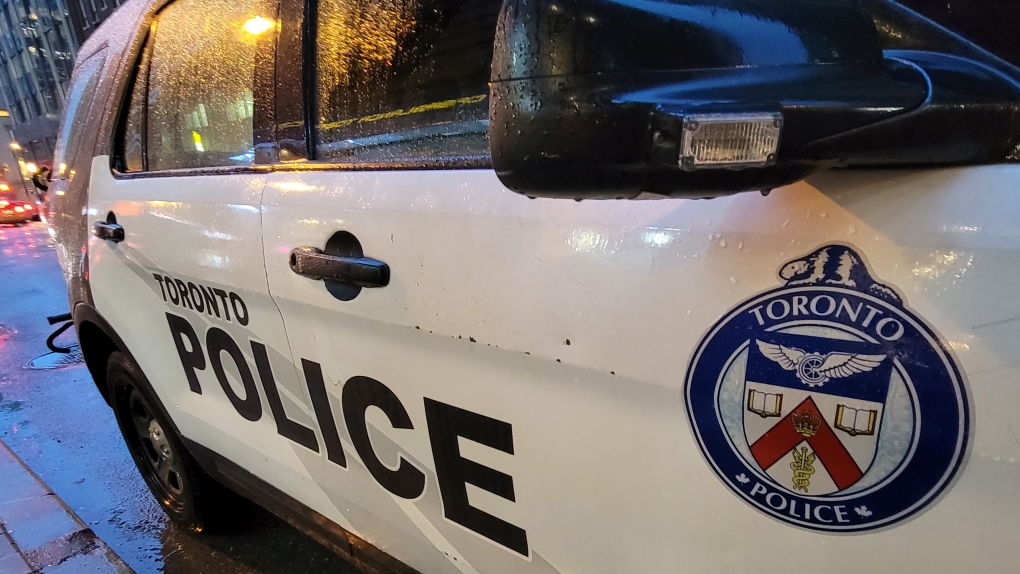Infra
Fact-checking Premier Ford’s recent comments on Toronto bike lanes | CBC News

Premier Doug Ford made several exaggerated claims about bike lanes in Toronto at a news conference on Monday — including a comment about emergency response times increasing, which the city debunked two years ago.
Last week, CBC Toronto reported the Ontario government is considering bringing forward legislation that could ban the installation of bike lanes when lanes for motor vehicles are removed as a result.
The government has not answered direct questions from CBC Toronto about the plan, so Ford’s comments stand as the clearest window into the government’s deliberation on the new policy, which is expected to be made public later this fall.
You can watch Ford’s comments below.
WATCH | Ford makes exaggerated comments on Toronto bike lanes:
Ontario is considering bringing forward legislation that could prohibit the installation of bike lanes when lanes for motor vehicles are removed. Speaking to reporters Monday, Doug Ford said bike lanes belong on secondary streets, and that they slow down emergency responders.
Here’s a breakdown of Ford’s statements and the accuracy of what he said:
The claim:
“Talk to our first responders that are pulling their hair out, the fire trucks that can’t get across the road because there’s barriers or there’s bike lanes and they’re backed up. Talk to our police that are trying to get to a call or our paramedics. It’s an absolute disaster, it’s a nightmare.”
The facts:
In an email to CBC Toronto Tuesday, the city said emergency services have not raised concerns about facing difficulties due to bike lanes.
“Emergency services are accustomed to manoeuvring through a variety of road conditions throughout the city on a daily basis and will continue to take the route that provides the fastest response based on the specific conditions at the time of dispatch,” the email said.
CBC Toronto has reached out to the Toronto Police Service.

In June, the city released an analysis of emergency response times related to the Bloor Street West Complete Street Extension project. The extension included installing cycle tracks separated by concrete curbs, bollards and planters.
After the project was installed, Toronto Fire’s response time in the area increased by 30 seconds, compared to the same period in 2022.
City-wide for the same period, fire response time increased by two seconds.
Paramedic response time increased by 42 seconds in the area compared to before the project was installed, data shows. However, its response time for the entire city also increased by 45 seconds over the same period.
As well, in March 2022, during a meeting of the city’s infrastructure and environment committee, the chiefs of Toronto paramedics and Toronto Fire said there was no evidence of increased emergency response times as a result of bike lanes installed in midtown Toronto.
The claim:
“You go down on Hospital Row, University Avenue, paramedics are trying to get someone to the hospital as quickly as possible. They take out a lane of traffic, put bike lanes in there, it’s cut down to one, it’s jammed like crazy.”
The facts:
In an email, the city said emergency services have not raised any issues about traffic on University Avenue.
CBC Toronto has reached out to hospitals on Hospital Row.

The claim:
“Believe it or not, my brother Rob actually put more bike lanes in than David Miller, but he didn’t do it down the middle of University or Bloor or any of those streets. He did it on the secondary arterial roads, side streets.”
The facts:
Based on city data, it is difficult to compare exactly how many bike lanes were built under David Miller versus under Rob Ford.
The city has an open data portal that shows how many bikeways were installed in Toronto from before 2001 to 2013.
Bikeways include cycle tracks, bike lanes, neighbourhood routes with sharrows, multi-use trails and signed cycling routes, according to the dataset description.
But the data does not specify which of the bikeways are in fact bike lanes.

Miller was elected mayor in November 2003 and served until 2010. According to city data, from 2004 to 2010, 317 bikeways were installed in the city.
Ford was elected mayor in October 2010 and served until 2014. City data shows 117 bikeways were installed in Toronto from 2011 to 2013.
In 2011, Ford supported the removal of bike lanes on Jarvis Street. Council voted to remove the lanes in July 2011 at a cost of about $270,000. The city had installed the lanes the year before for $86,000.
According to a CBC Toronto report from 2011, Ford’s bicycle plan envisioned building a cycling network separate from roadways along Toronto’s ravines and parks, without including plans for additional lanes or enhancements on the city’s roads.
Toronto’s first separated bike lanes opened under Ford on Sherbourne Street in 2013.
The claim:
“Go on Bloor Street … There’s a petition just in Etobicoke for 50,000 people, signing to get rid of these bike lanes. You might see four or five bikes as you see traffic lined up all the way down the road for kilometres and kilometres.”
The facts:
About 13,300 people have signed a petition on change.org calling for the “re-evaluation and balanced integration” of bike lanes on Bloor Street in Etobicoke.
The petition does not explicitly call for the bike lanes to be removed, but expresses several concerns about the lanes — including that two lanes of traffic in each direction are “crucial” for Bloor Street.

“While we recognize the importance of providing right of way for bikes, this should not come at the cost of significantly impeding the flow of vehicular traffic or causing confusion that may lead to accidents,” the petition description reads.
Among the concerns, the petition says that residents and businesses in the area have observed a “limited” number of cyclists using the bike lanes.
But a survey conducted by biking advocacy group Toronto Community Bikeways Coalition found an 80 per cent increase in the number of cyclists at Bloor Street W. and Royal York Road in Etobicoke.
The survey was based on a 24-hour count on Sept. 18 this year, compared to a count from Aug. 16, 2023, before new protected cycle tracks were installed.
Over 500 cyclists were documented using the track further west on Bloor Street at Islington Avenue in a 24-hour count on Sept. 18, though no baseline data before the tracks were installed was available.
In another 24-hour count on the same day at Bloor Street and Runnymede, 1,465 cyclists were recorded at the intersection, the advocacy group said.








